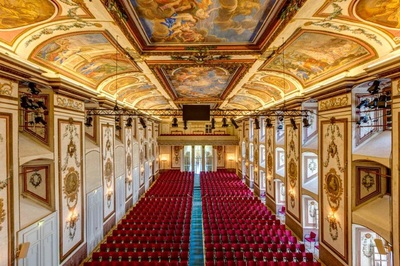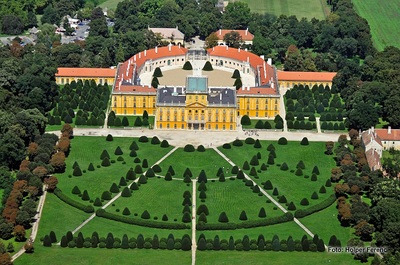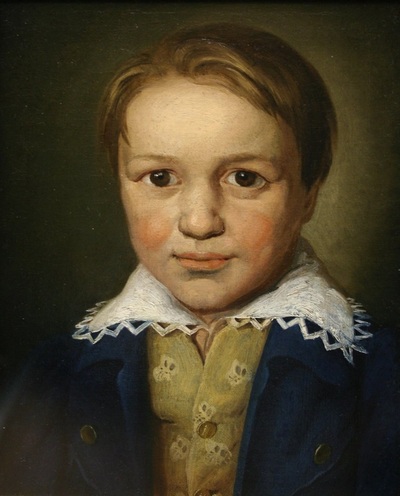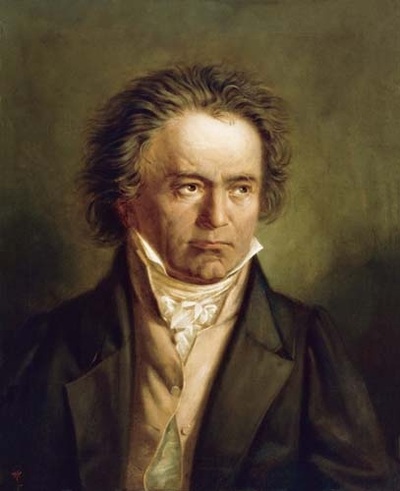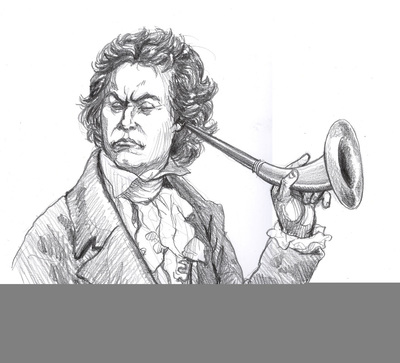M.Fish Music Appreciation
Lecture: The CLASSICAL Era
1750-1830
Text Starts Here
(Canvas Quiz is taken from this text)
1.
The Rococo
The contrapuntal practices of Baroque began to give way in the first half of the eighteenth century to a highly ornamented style of melodic instrumental music. This style has come to be called Rococo after the same movement in the visual arts. It is also evident in the music of the two sons of Johann Sebastian Bach, Carl Philipp Emanuel Bach (1714-1788) and Johann Christian Bach (1735-1782). J. C. Bach eventually made his home in London and became known as the "London" Bach to distinguish him from his older brother. Johann Christian's many keyboard concertos profoundly influenced the eight-year-old Mozart when the two met in London in 1764. Likewise, C. P. E. Bach's expressive keyboard sonatas influenced the piano sonatas of later composers Franz Joseph Haydn and Ludwig van Beethoven.
The increasing emphasis of the age on reason and enlightenment fueled a sense of humanity's being in charge of its destiny -- that through science and democracy, people could choose their fate. Such prevailing philosophy and thought likely triggered the French and American Revolutions.
C.P.E. Bach Sonata in A
(Canvas Quiz is taken from this text)
1.
The Rococo
The contrapuntal practices of Baroque began to give way in the first half of the eighteenth century to a highly ornamented style of melodic instrumental music. This style has come to be called Rococo after the same movement in the visual arts. It is also evident in the music of the two sons of Johann Sebastian Bach, Carl Philipp Emanuel Bach (1714-1788) and Johann Christian Bach (1735-1782). J. C. Bach eventually made his home in London and became known as the "London" Bach to distinguish him from his older brother. Johann Christian's many keyboard concertos profoundly influenced the eight-year-old Mozart when the two met in London in 1764. Likewise, C. P. E. Bach's expressive keyboard sonatas influenced the piano sonatas of later composers Franz Joseph Haydn and Ludwig van Beethoven.
The increasing emphasis of the age on reason and enlightenment fueled a sense of humanity's being in charge of its destiny -- that through science and democracy, people could choose their fate. Such prevailing philosophy and thought likely triggered the French and American Revolutions.
C.P.E. Bach Sonata in A
2.
Age of Reason
The Age of Reason was an eighteenth-century movement that followed hard after the mysticism, religion, and superstition of the Middle Ages. The Age of Reason represented a genesis in how man viewed himself, the pursuit of knowledge, and the universe. In this period, man’s previously held concepts of conduct and thought could now be challenged verbally and in written form; fears of being labeled a heretic or being burned at the stake were done away with. This began an open society where individuals were free to pursue happiness and liberty. Politically and socially, the imperial concepts of the medieval world were abandoned. The Age of Reason included the shorter period described as the Age of Enlightenment; significant changes occurred in scientific thought and exploration during this time. New ideas filled the horizon, and man was eager to explore these ideas freely.
Age of Reason
The Age of Reason was an eighteenth-century movement that followed hard after the mysticism, religion, and superstition of the Middle Ages. The Age of Reason represented a genesis in how man viewed himself, the pursuit of knowledge, and the universe. In this period, man’s previously held concepts of conduct and thought could now be challenged verbally and in written form; fears of being labeled a heretic or being burned at the stake were done away with. This began an open society where individuals were free to pursue happiness and liberty. Politically and socially, the imperial concepts of the medieval world were abandoned. The Age of Reason included the shorter period described as the Age of Enlightenment; significant changes occurred in scientific thought and exploration during this time. New ideas filled the horizon, and man was eager to explore these ideas freely.

3.
The Rise of the Symphony
About the middle of the century in Mannheim, Germany, composer, and conductor Johann Stamitz (1717-1757) and his followers began to develop the orchestra and the art of orchestration, basing their music on the Baroque homophonic style, but now with chords played in unison rather than contrapuntally. This music became the basis for the Classical instrumental sonata, string quartet, and orchestral symphony. It reached its apex in the works of Franz Joseph Haydn and Wolfgang Amadeus Mozart.
Birth of the Symphony:
Handle to Haydn (0:00-16:00)
The Rise of the Symphony
About the middle of the century in Mannheim, Germany, composer, and conductor Johann Stamitz (1717-1757) and his followers began to develop the orchestra and the art of orchestration, basing their music on the Baroque homophonic style, but now with chords played in unison rather than contrapuntally. This music became the basis for the Classical instrumental sonata, string quartet, and orchestral symphony. It reached its apex in the works of Franz Joseph Haydn and Wolfgang Amadeus Mozart.
Birth of the Symphony:
Handle to Haydn (0:00-16:00)

4.
Franz Joseph Haydn
Born: Rohrau, Lower Austria, (baptized April 1), 1732
Died: Vienna, May 31, 1809
Born the second of twelve children to a poor but music-loving family, Franz Joseph was accepted into the choir of St. Stephen's Cathedral in Vienna at eight. In 1749, after enduring nine years at the cathedral, he was turned out when his voice broke. Without money, a job, or a home, the young man somehow survived by singing, playing the harpsichord where he could, and teaching, all the time practicing and continuing to study music. He also began composing and making connections. His first symphony led to his engagement in 1761 as orchestra conductor to the Hungarian Prince Paul Anton Esterházy. Haydn spent thirty years in the employ of the Esterházys, virtually as a servant, but composing some 90 symphonies, two dozen operas, several masses, and vast amounts of chamber music. His fame spread across Europe due to the publication of his music, and, almost unknown to him, the immense popularity of his music set the standard of the musical tastes and techniques of the next half-century. He met the young Mozart in 1781, and the two became close friends and admirers of the other's music; he was a teacher of Beethoven for a short while.
When Prince Nicolaus Esterházy died in 1790 (he had succeeded Prince Paul in 1762 and had retained Haydn's services), Haydn was dismissed by his successor. With a generous pension and income from publications and pupils, Haydn moved to Vienna. He was invited to London by impresario J. P. Salomon for a series of concerts. During this visit and a second trip to England, Haydn composed his last twelve "London" symphonies, his crowning achievements in the genre.
Known today as the "Father of the Symphony and the String quartet," Haydn invented neither but did develop them into the forms that eventually swept throughout Europe. Joseph Haydn was an unassuming man who, seemingly without effort, turned out hundreds of sonatas, quartets, symphonies, operas, and concertos during his career. His music is always highly well-crafted and seemingly simple and charming, but there are always flights of fancy and pure jokes amidst the classical veneer.
Haydn's Farewell Symphony (final mvt start about 3:00)
String Quartet Explained examples
String Quartet Explained
Why it's called "Surprise" (intro)
Haydn TOY
Haydn's "Emperor" Quartet (class: 9:25-19:16)
Franz Joseph Haydn
Born: Rohrau, Lower Austria, (baptized April 1), 1732
Died: Vienna, May 31, 1809
Born the second of twelve children to a poor but music-loving family, Franz Joseph was accepted into the choir of St. Stephen's Cathedral in Vienna at eight. In 1749, after enduring nine years at the cathedral, he was turned out when his voice broke. Without money, a job, or a home, the young man somehow survived by singing, playing the harpsichord where he could, and teaching, all the time practicing and continuing to study music. He also began composing and making connections. His first symphony led to his engagement in 1761 as orchestra conductor to the Hungarian Prince Paul Anton Esterházy. Haydn spent thirty years in the employ of the Esterházys, virtually as a servant, but composing some 90 symphonies, two dozen operas, several masses, and vast amounts of chamber music. His fame spread across Europe due to the publication of his music, and, almost unknown to him, the immense popularity of his music set the standard of the musical tastes and techniques of the next half-century. He met the young Mozart in 1781, and the two became close friends and admirers of the other's music; he was a teacher of Beethoven for a short while.
When Prince Nicolaus Esterházy died in 1790 (he had succeeded Prince Paul in 1762 and had retained Haydn's services), Haydn was dismissed by his successor. With a generous pension and income from publications and pupils, Haydn moved to Vienna. He was invited to London by impresario J. P. Salomon for a series of concerts. During this visit and a second trip to England, Haydn composed his last twelve "London" symphonies, his crowning achievements in the genre.
Known today as the "Father of the Symphony and the String quartet," Haydn invented neither but did develop them into the forms that eventually swept throughout Europe. Joseph Haydn was an unassuming man who, seemingly without effort, turned out hundreds of sonatas, quartets, symphonies, operas, and concertos during his career. His music is always highly well-crafted and seemingly simple and charming, but there are always flights of fancy and pure jokes amidst the classical veneer.
Haydn's Farewell Symphony (final mvt start about 3:00)
String Quartet Explained examples
String Quartet Explained
Why it's called "Surprise" (intro)
Haydn TOY
Haydn's "Emperor" Quartet (class: 9:25-19:16)
Eight interesting things about Joseph Haydn
- Born to a wheelwright, he left home at age 6 to sing in Vienna’s St. Stephen’s Cathedral. When his voice broke, he was dismissed.
- Haydn liked wine so much that he insisted that part of his salary be paid in it.
- The greatest mistake of his life was marrying his wife. Initially, he fell in love with her sister, but she became a nun. Considered a shrew, Haydn’s wife used to rip up his scores and use them as hair curlers.
- Haydn and Mozart used to play string quartets together. Haydn played violin, and Mozart played viola. Whose music do you think they played?
- When a Viennese pianist sneered at a Haydn passage, saying, "I would not have written it that way," Mozart replied, "Neither would I. And you know why? Because neither of us would have had so excellent an idea."
- At his last public concert, Haydn had to be carried out in a chair, held aloft by adoring musicians. As he passed up the aisle, Beethoven kissed his hands. The audience shed tears. Before reaching the door, Haydn turned and raised his hand to the orchestra as if in blessing.
- Mozart’s Requiem was played at Haydn’s funeral.
- For 150 years, Haydn’s skull was displayed at the famed Musikverein (concert hall) in Vienna. Brahms, who couldn’t afford his own home, slept in an apartment there and liked to take Haydn’s skull at night, when he was composing, and put it on his desk for inspiration.
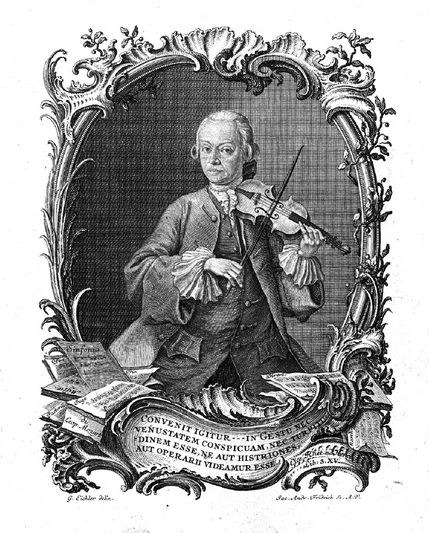
5.
Wolfgang Amadeus Mozart
Born: Salzburg, January 27, 1756
Died: Vienna, December 5, 1791
At age four, he could learn a piece of music in half an hour. At five, he was playing the clavier incredibly well. At five, he began composing, writing his first symphonies at eight. He was constantly traveling all over Europe with his father, Leopold Mozart (1719-1787), a violinist, minor composer, and Vice-Kapellmeister at the court of the Archbishop of Salzburg. The musical feats and tricks of young Wolfgang were exhibited to the courts (beginning in Munich in 1762), to musical academicians, and the public. The young Mozart spent half of his time on tour between seven and fifteen. During these tours, Mozart heard, absorbed, and learned various European musical idioms, eventually crystallizing his mature style.
Mozart became court organist to the Archbishop. Mozart finally achieved an unceremonious dismissal from the archiepiscopal court 1781 and thereafter became one of the first musicians in history to embark upon a free-lance career without the benefit of church, court, or a wealthy patron. Mozart moved to Vienna, where, for a time, things began to look bright for the young composer. Starting in 1782, in every form and genre, Mozart turned out one masterpiece after another.
Mozart is the only composer in history to have written undisputed masterworks in virtually every musical genre his age.
Mozart became a regular at the court of Emperor Joseph II (1741-1790) in Vienna, where he wrote much of his most excellent music.
Of Mozart's operas, Le Nozze di Figaro (The Marriage of Figaro), composed for the Viennese court in 1786, is the earliest opera still found in the repertoire of virtually all of today's opera houses. Having scaled the heights of Italian opera buffa, Mozart returned to the German Singspiel in the final year of his life. Again, he produced yet another masterpiece, Die Zauberflöte (The Magic Flute)
During his years in Vienna, Mozart also made the acquaintance of composer Franz Joseph Haydn. The two became close friends, and the older composer's music profoundly influenced Mozart. Between 1782 and 1785, Mozart composed a series of six string quartets, which he dedicated to Haydn. After playing through some of them together, Haydn told Mozart's father, who was present, "Before God and as an honest man, your son is the greatest composer I know, either personally or by name."
Yet through his mismanagement of money (and as a successful composer of operas and a renowned piano virtuoso, he made a great deal) and the documented incidences of his tactless, impulsive, and, at times, childish behavior in an era of powdered wigs and courtly manners, Mozart seemed to find it challenging to make a successful living. By 1790, he wrote letters to friends, describing himself and his family (he and Constanze had six children, only two of which survived) in desperate circumstances and begging for money. He was also by this time seriously ill and had been intermittently for some time, with what was most likely a disease of the kidneys. With the success of The Magic Flute and a newly granted yearly stipend, Mozart was beginning to become financially stable when his illness ended his life and career at the age of thirty-six. Like most Viennese in those days, he was buried by the decree of Emperor Joseph in a common grave, the exact location of which remains unknown.
The influence of Mozart on the composers that followed cannot be emphasized too strongly. Late nineteenth-century composers, such as Richard Wagner and Peter Tchaikovsky, and his music influenced the neo-classical compositions of Igor Stravinsky and Sergei Prokofiev in the twentieth century.
Mozart short bio (3 min.)
Mozart childhood notes from Salieri
Too Many Notes
Don Giovanni (Amadeus)
Don Giovanni at Theater-An-Der-Wiesen (Amadeus)
Listening to a little Mozart: Queen of the night (Magic Flute)
Papageno Papageno Duet (Start 4:25)
Listening to a little Mozart: K1
Mozart: K626 Requiem (complete)
Mozart: K 626 Requiem (Confutatis and Lacrimosa)
Listening to a little Mozart: Piano Concerto No.21 (class: 15:00)
Listening to a little Mozart: Piano Concerto No. 23 (class mvt. 18:34)
Mozart and Bugs (3 min.)
Listening to a little Mozart? Clarinet Concerto in A (12:00)
Wolfgang Amadeus Mozart
Born: Salzburg, January 27, 1756
Died: Vienna, December 5, 1791
At age four, he could learn a piece of music in half an hour. At five, he was playing the clavier incredibly well. At five, he began composing, writing his first symphonies at eight. He was constantly traveling all over Europe with his father, Leopold Mozart (1719-1787), a violinist, minor composer, and Vice-Kapellmeister at the court of the Archbishop of Salzburg. The musical feats and tricks of young Wolfgang were exhibited to the courts (beginning in Munich in 1762), to musical academicians, and the public. The young Mozart spent half of his time on tour between seven and fifteen. During these tours, Mozart heard, absorbed, and learned various European musical idioms, eventually crystallizing his mature style.
Mozart became court organist to the Archbishop. Mozart finally achieved an unceremonious dismissal from the archiepiscopal court 1781 and thereafter became one of the first musicians in history to embark upon a free-lance career without the benefit of church, court, or a wealthy patron. Mozart moved to Vienna, where, for a time, things began to look bright for the young composer. Starting in 1782, in every form and genre, Mozart turned out one masterpiece after another.
Mozart is the only composer in history to have written undisputed masterworks in virtually every musical genre his age.
Mozart became a regular at the court of Emperor Joseph II (1741-1790) in Vienna, where he wrote much of his most excellent music.
Of Mozart's operas, Le Nozze di Figaro (The Marriage of Figaro), composed for the Viennese court in 1786, is the earliest opera still found in the repertoire of virtually all of today's opera houses. Having scaled the heights of Italian opera buffa, Mozart returned to the German Singspiel in the final year of his life. Again, he produced yet another masterpiece, Die Zauberflöte (The Magic Flute)
During his years in Vienna, Mozart also made the acquaintance of composer Franz Joseph Haydn. The two became close friends, and the older composer's music profoundly influenced Mozart. Between 1782 and 1785, Mozart composed a series of six string quartets, which he dedicated to Haydn. After playing through some of them together, Haydn told Mozart's father, who was present, "Before God and as an honest man, your son is the greatest composer I know, either personally or by name."
Yet through his mismanagement of money (and as a successful composer of operas and a renowned piano virtuoso, he made a great deal) and the documented incidences of his tactless, impulsive, and, at times, childish behavior in an era of powdered wigs and courtly manners, Mozart seemed to find it challenging to make a successful living. By 1790, he wrote letters to friends, describing himself and his family (he and Constanze had six children, only two of which survived) in desperate circumstances and begging for money. He was also by this time seriously ill and had been intermittently for some time, with what was most likely a disease of the kidneys. With the success of The Magic Flute and a newly granted yearly stipend, Mozart was beginning to become financially stable when his illness ended his life and career at the age of thirty-six. Like most Viennese in those days, he was buried by the decree of Emperor Joseph in a common grave, the exact location of which remains unknown.
The influence of Mozart on the composers that followed cannot be emphasized too strongly. Late nineteenth-century composers, such as Richard Wagner and Peter Tchaikovsky, and his music influenced the neo-classical compositions of Igor Stravinsky and Sergei Prokofiev in the twentieth century.
Mozart short bio (3 min.)
Mozart childhood notes from Salieri
Too Many Notes
Don Giovanni (Amadeus)
Don Giovanni at Theater-An-Der-Wiesen (Amadeus)
Listening to a little Mozart: Queen of the night (Magic Flute)
Papageno Papageno Duet (Start 4:25)
Listening to a little Mozart: K1
Mozart: K626 Requiem (complete)
Mozart: K 626 Requiem (Confutatis and Lacrimosa)
Listening to a little Mozart: Piano Concerto No.21 (class: 15:00)
Listening to a little Mozart: Piano Concerto No. 23 (class mvt. 18:34)
Mozart and Bugs (3 min.)
Listening to a little Mozart? Clarinet Concerto in A (12:00)
___________________________
M O Z A R T in S A L Z B U R G
M O Z A R T in S A L Z B U R G
__________________________
M O R A Z R T in P R A G U E
M O R A Z R T in P R A G U E
________________________
M O Z A R T in V I E N N A
M O Z A R T in V I E N N A
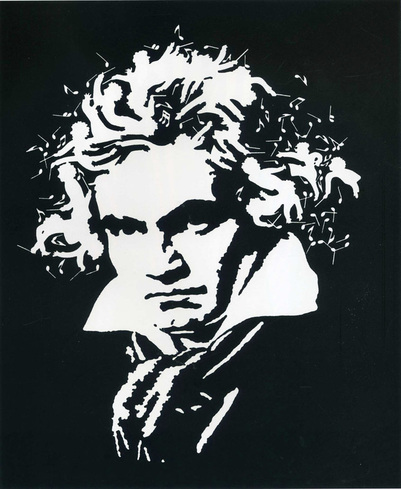
6.
Ludwig van Beethoven
Born: Bonn, (baptized December 17), 1770
Died: Vienna, March 26, 1827
Born to a drunkard father and an unhappy mother, the young Beethoven was subjected to brutal training in music at the hands of his father, who hoped that the boy would prove to be another prodigy like Mozart. Failing in this, the young Beethoven embraced music and studied briefly in 1792 with Franz Joseph Haydn in Vienna. Hailed as a genius and a master of improvisation at the piano, Beethoven soon made a name for himself, and by 1794, he was known throughout Europe.
By 1800, Beethoven had become aware of his advancing deafness -- indeed, a horrible fate for a musician and unendurable to a composer. Agonizing over his fate, Beethoven contemplated suicide but, in the end, embraced life, determined to go on composing if no longer performing. Unhappy with his compositions up to that time and stating that he would now be "making a fresh start," Beethoven began composing music that had never before been heard. His Symphony No. Three in E-flat major subtitled the "Eroica," was completed in 1804 and was almost twice as long as any symphony written up to that time. Taking the classical symphony as a starting point, it introduces more themes, contrasts, instruments, weight, and drama than previously heard in the symphonic form. His sixteen string quartets span his creative life and developed from the classical restraint of the six "Early" quartets to the sublime late quartets, which contain music of such personal pain and suffering that one wonders if an audience was intended to hear them at all.
Beethoven introduced the notion of the nineteenth-century virtuoso concert pianist.
The idea of universal freedom, equality, and the brotherhood of man was one the composer cherished. Beethoven's only opera, Fidelio, is on this very subject, and the theme is nowhere expressed more powerfully or beautifully than in the final movement of the monumental Symphony No. 9 in D minor, composed in 1824 when Beethoven was completely deaf. To a tune so simple that half the world knows it and sings it, the genius of Beethoven seeks to embrace all humanity with his vision of equality, democracy, and love.
With plans for the future and sketches of a tenth symphony beginning, Beethoven contracted a chill, which led to a long illness. After being in and out of consciousness for weeks, Beethoven succumbed on March 26, 1827. Some 10,000 people lined the streets of Vienna at his funeral to pay homage to the composer who forever changed Western Europe's musical climate. With Beethoven's passing, the stage was set for the onslaught of Romanticism in Western music.
End of Text
* BEETHOVEN in Two:
Photos from two cities--Bonn and Vienna (Krauft Grant)
***Updated Beethoven Photos--Bonn and Vienna
* Beethoven Fish Krauft Grant Youtube (3 min.)
Beethoven short bio (18 min)
* Beethoven Symphony No. 5
Beethoven 5th Symphony Remix
Listening to a little Beethoven: Fur Elise
Listening to a little Beethoven: "Pathetique" 2nd mvt, Sonata No. 8 in C minor
Listening to a little Beethoven: "Moonlight"
* Moonlight (MFish Lucerne)
Moonlight (w/graphics)
Listening to a little Beethoven: "Moonlight" 1st mvt, Sonata No. 14 in C Sharp Minor metal
* Beethoven Symphony No. 9 Barenboim at PROMS
(Class: 0-15:09 then 18:18-20:10 then 23:18 to the end)
Brief Summary of Three Classical Period
and Composers: Haydn, Mozart, Beethoven
The contrapuntal practices of Baroque began to give way in the first half of the eighteenth century to a highly ornamented style of melodic instrumental music. This style has come to be called Rococo.
Born the second of twelve children to a poor but music-loving family, Franz Joseph Haydn was accepted into the choir of St. Stephen's Cathedral in Vienna at eight. In 1749, after enduring nine years at the cathedral, he was turned out when his voice broke. His first symphony led to his engagement in 1761 as orchestra conductor to the Hungarian Prince Paul Anton Esterházy.
Haydn spent thirty years in the employ of the Esterházys, virtually as a servant, but composing some 90 symphonies, two dozen operas, several masses, and vast amounts of chamber music.
Haydn is known today as the "Father of the Symphony and the String Quartet,”
At age four, Mozart could learn a piece of music in half an hour. At five, he was playing the clavier incredibly well. At five, he began composing, writing his first symphonies at eight. He became court organist to the Archbishop. Mozart finally achieved an unceremonious dismissal from the archiepiscopal court in 1781 and thereafter became one of the first musicians in history to embark upon a free-lance career without the benefit of church, court, or a wealthy patron.
During his years in Vienna, Mozart also made the acquaintance of composer Franz Joseph Haydn. The two became close friends, and the older composer's music profoundly influenced Mozart.
Through his mismanagement of money (and as a successful composer of operas and a renowned piano virtuoso, he made a great deal) and the documented incidences of his tactless, impulsive, and, at times, childish behavior in an era of powdered wigs and courtly manners, Mozart seemed to find it challenging to make a successful living.
Like most Viennese people in those days, he was buried by the decree of Emperor Joseph in a common grave, but the exact location remains unknown.
Born to a drunkard father and an unhappy mother, the young Ludwig van Beethoven was subjected to brutal music training at his father's hands, who hoped that the boy would prove to be another prodigy like Mozart.
In Vienna, Beethoven was hailed as a genius and a master of improvisation at the piano. Beethoven soon made a name for himself, and by 1794, he was known throughout Europe.
By 1800, Beethoven had become aware of his advancing deafness.
The idea of universal freedom, equality, and the brotherhood of man was one the composer cherished. Beethoven's only opera, Fidelio, is on this very subject, and the theme is nowhere expressed more powerfully or beautifully than in the final movement of the monumental Symphony No. 9 in D minor, composed in 1824 when Beethoven was completely deaf.
His Symphony No. Three in E-flat major subtitled the "Eroica," was completed in 1804 and was almost twice as long as any symphony written up to that time. With plans for the future and sketches of a tenth symphony beginning, Beethoven contracted a chill, which led to a long illness. After being in and out of consciousness for weeks, Beethoven succumbed on March 26, 1827.
With Beethoven's passing, the stage was set for the onslaught of Romanticism in Western music.

